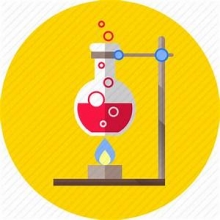How does your body turn food into the poop Human digestion system|With Voiceover #digestivesystem
Science & Technology
Published on Feb 15, 2023
How your body turns food into the poo Human digestion system
With Narration
#inside_the_intestine
How does your body turn food into poop?
Mechanical digestion begins in the mouth as the food is chewed.
Chemical digestion begins in the mouth when food mixes with saliva. Saliva contains an enzyme (amylase)
that begins the breakdown of carbohydrates.
The epiglottis is a flexible flap at the end of the larynx in the throat. It acts as a switch between the larynx and the esophagus to permit air to enter the airway to the lungs and
food to pass into the esophagus. it is a muscular tube connecting the throat with the stomach. The esophagus is about 8 inches long.
The esophagus muscle acts with peristaltic action to move swallowed food down to the stomach. The action of peristalsis looks like an ocean wave moving through the muscle
The food then enters the stomach, which is a rounded, hollow j shape organ Located between the esophagus and the duodenum. the stomach has three mechanical tasks to
do. First, the stomach must store the swallowed food and liquid. This requires the
muscle of the upper part of the stomach to relax and accept large volumes of swallowed
material., The inner layer of the stomach is full of wrinkles known as rugae. Rugae both
allow the stomach to stretch in order to accommodate large meals and help to grip and
move food during digestion.
The second job is to mix up the food, liquid, with digestive juice produced by the
stomach. The lower part of the stomach mixes these materials as a blender by its
muscle action. and breaks down the food into tiny particles in 3 millimeters
finally, the stomach empties this acidy mash slowly into the small intestine.
The small intestine or small bowel is an organ in the gastrointestinal tract where most of
the end absorption of nutrients and minerals from food takes place. It lies between the
stomach and large intestine and receives bile and pancreatic juice through the
pancreatic duct to aid in digestion.
The Duodenum, the first part of the small intestine, receives partially digested
food from the stomach and begins the absorption of nutrients. The duodenum is
the shortest segment of the intestine and is about 23 to 28 cm (9 to 11 inches)
long. It is roughly horseshoe-shaped
The pancreatic juices and bile that are released into the duodenum, help the body to
digest fats, carbohydrates, and proteins.
The food is in instetin now and has a very long way to go!
As a person grows the small intestine increases 20 times in length from about 200 cm in a
newborn to almost 6 m in an adult.
The inner walls of the small intestine show mucosal folds. These are called the plicae
circulares. The plicae are more numerous in the early and reduce in numbers in the later
part and are completely absent.
Digestion is important because your body needs nutrients from food and drink to
work properly and stay
healthy. Proteins, fats, carbohydrates, vitamins, minerals, and water are
nutrients. Your digestive system breaks nutrients into parts small enough for
your body to absorb and use for energy, growth, and cell repair.
•Proteins break into amino acids
•Fats break into fatty acids and glycerol
•Carbohydrates break into simple sugars
In the small bowel, the food particles get even smaller. Here is where all the
important vitamins and nutrients in food move through the blood vessels that are
in the lining of the small bowel. The blood takes the nutrients to other organs in
the body. The nutrients are used to help repair cells and tissue.
What is left over, which is mostly liquid, then moves into the colon. The water
is absorbed in the colon. Bacteria in the colon break down the remaining
material. Then the colon moves the leftover material into the rectum.
the rectum is like a storage-holder for this waste. Muscles in the rectum move the
waste, called stool, out of the body through the anus.
0:01 How does your body turn food into the poo
0:08 food in the mouth
0:34 Esophagus
0:52 Stomach
1:56 Small intestine
3:35 Colon
3:60 Rectum
#3dmedicalanimation
Small intestine with intestinal worms 360 degree Intestinal Parasites medical animation
https://youtu.be/BBSCvW5fjtA
The effect of Tied umbilical cord in twins
https://youtu.be/vB9ZBnwTfKg
High Blood Pressure Hypertension
https://youtu.be/gsczOAeGst4
How your body turns food into the poo Human digestion system in human beings
https://youtu.be/HXrl37BC3QU
coronary angiogram Micro Needle|3d medical animation|sample use only
https://youtu.be/sRGMJhit4h0
heart valve replacement 3d medical animation|sample use only|dandelion team
https://youtu.be/9L9i59eY5Zg
shortvideos
how long does it take for the body to digest food?
https://youtu.be/z6G2L1hY5hc
The world of inside a bone
https://youtu.be/SWCLK4t0iXo
What Part of the Brain Controls Emotions?
https://youtu.be/UHTm2aqv-tQ
small intestine
https://youtu.be/7hweT7wgyF0
#digestivesystem #dandelion_team
copyright by Dandelion Team










